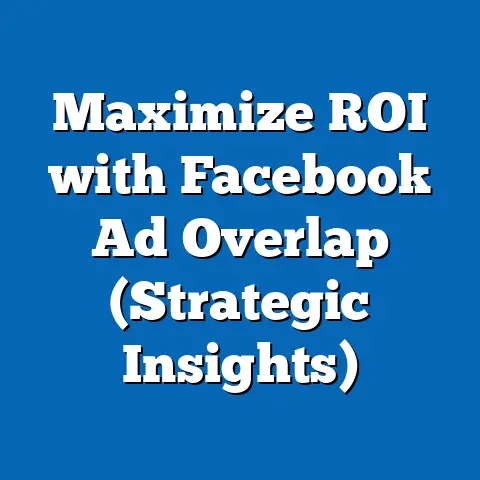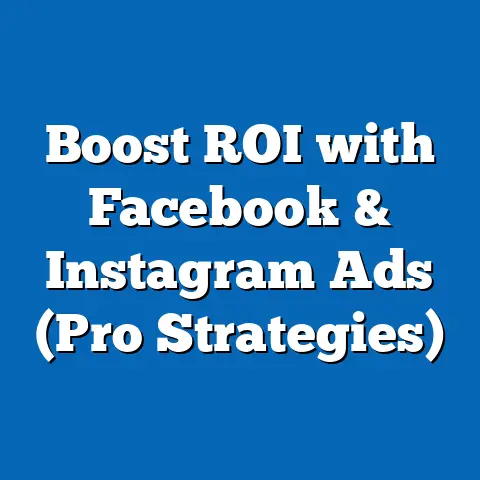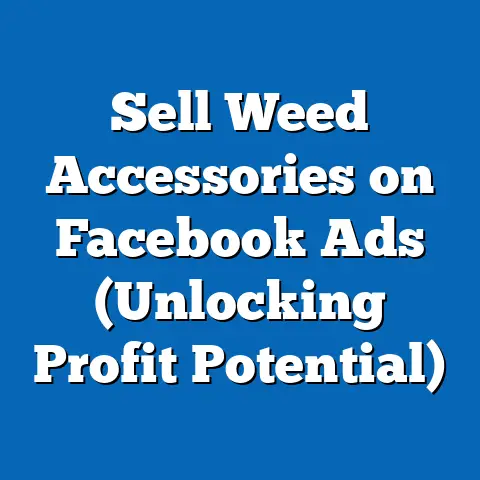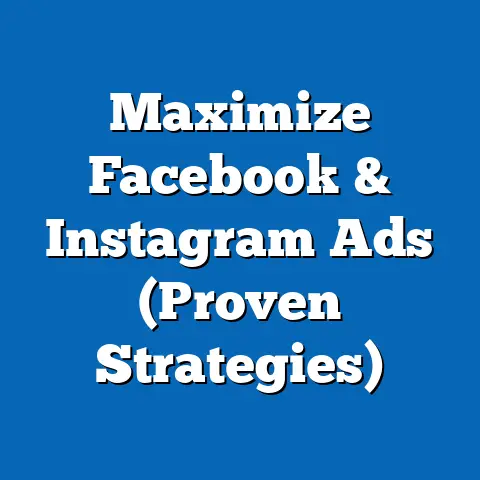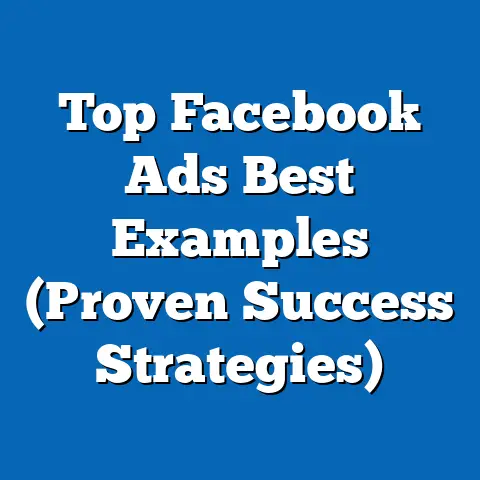Disney Pulls Ads from Facebook (What This Means for Brands)
In July 2020, Disney, one of the largest advertisers in the entertainment industry, made headlines by significantly reducing its advertising spend on Facebook as part of a broader movement addressing concerns over content moderation and hate speech on the platform. This decision, aligned with the #StopHateForProfit campaign, reflects a growing unease among major brands about the alignment of their marketing strategies with platforms perceived to enable harmful content. This comprehensive report examines the implications of Disney’s actions for brands, contextualizes the decision within broader industry trends of digital advertising shifts, and analyzes the potential long-term impact on social media platforms and advertising strategies.
The report begins with an overview of current trends in digital advertising, focusing on the increasing scrutiny of social media platforms, supported by relevant statistics and demographic breakdowns. It then delves into the specifics of Disney’s ad pullback, the #StopHateForProfit campaign, and the response from Facebook. Finally, it explores the broader implications for brands, including shifts in advertising budgets, alternative platforms, and evolving consumer expectations.
Section 1: Industry Trend – Growing Scrutiny of Social Media Advertising
1.1 The Rise of Ethical Advertising Concerns
Digital advertising has experienced exponential growth over the past decade, with global spending reaching $378 billion in 2020, a 12.5% increase from 2019, according to eMarketer. Social media platforms, particularly Facebook, have been central to this growth, capturing 28.6% of total digital ad spend in 2020, equating to approximately $108 billion. However, alongside this growth, brands are increasingly facing pressure to align their advertising with ethical considerations, driven by consumer expectations and activist campaigns.
A 2020 survey by Edelman, involving 36,000 respondents across 28 countries, found that 60% of consumers expect brands to take a stand on social issues, with 53% stating they would stop purchasing from brands that advertise on platforms hosting harmful content. This trend has intensified in recent years, with a 15% year-over-year increase in consumers prioritizing ethical alignment in their purchasing decisions since 2018.
1.2 Demographic Breakdown of Consumer Expectations
The demand for ethical advertising varies significantly across demographics. Among Gen Z (ages 18-24), 72% reported in a 2020 Pew Research Center survey that they are likely to boycott brands associated with platforms that fail to moderate hate speech, compared to 58% of Millennials (ages 25-40), 45% of Gen X (ages 41-56), and just 32% of Baby Boomers (ages 57+). Gender differences also emerge, with 65% of women expressing concern over brand alignment with problematic content, compared to 54% of men, per a Nielsen study from 2020.
Racial demographics reveal further nuances. Black and Hispanic consumers are more likely to prioritize ethical advertising, with 68% and 64%, respectively, indicating they would switch brands over social media platform associations, compared to 52% of White consumers, according to a 2020 Kantar report. Income levels also play a role, as higher-income households (above $100,000 annually) show less sensitivity to these issues (48% concern rate) compared to lower-income households (under $50,000 annually) at 62%, likely due to differing priorities and access to information.
1.3 Trend Analysis: The Shift Toward Accountability
The trend of holding social media platforms accountable for content moderation has gained momentum since 2018, following high-profile incidents like the Cambridge Analytica scandal and increased visibility of misinformation during elections. According to a 2021 report by the Interactive Advertising Bureau (IAB), 41% of brands have reevaluated their social media ad spend in the past three years due to content moderation concerns, up from 25% in 2018. This represents a 64% increase in such reevaluations, signaling a critical shift in advertiser priorities.
Moreover, the #StopHateForProfit campaign, launched in June 2020 by civil rights organizations, has galvanized over 1,200 companies to pause or reduce ad spending on Facebook, resulting in an estimated $7 billion loss in market value for the platform within weeks of the campaign’s launch, per Bloomberg data. This collective action underscores a broader industry pivot toward prioritizing brand safety and social responsibility over pure reach and engagement metrics.
Section 2: Disney’s Decision to Pull Ads from Facebook
2.1 Context of Disney’s Move
Disney, a powerhouse in entertainment with an annual advertising budget exceeding $2 billion, announced in July 2020 that it would significantly reduce its ad spend on Facebook, focusing primarily on its streaming service Hulu promotions. This decision came amid the #StopHateForProfit campaign, which urged brands to pause advertising on Facebook in July 2020 to protest the platform’s handling of hate speech and misinformation. While Disney did not publicly confirm the exact reduction, industry estimates reported by The Wall Street Journal suggest a cut of tens of millions of dollars in ad spend, a notable dent given Disney’s status as one of Facebook’s top advertisers.
Disney’s move was not a complete withdrawal, as some ad spend continued for other Disney properties. However, the symbolic weight of the decision reverberated across the industry, given Disney’s family-oriented brand identity and its influence over other advertisers. This action followed similar moves by other major brands like Unilever, Coca-Cola, and Verizon, though Disney’s scale and cultural significance amplified the impact.
2.2 Methodology Behind Reported Data
The data surrounding Disney’s ad spend reduction comes from industry estimates and media reports, as the company did not disclose specific figures. Pathmatics, a digital ad tracking firm, estimated that Disney spent approximately $210 million on Facebook ads in 2019, with a significant portion allocated to Hulu promotions. Reports of the 2020 pullback suggest a reduction of at least 50% in specific campaigns, though exact numbers remain speculative due to the private nature of ad contracts.
Surveys of industry sentiment, such as those conducted by the World Federation of Advertisers (WFA) in July 2020 with over 200 member companies, provide additional context. These surveys found that 55% of brands were considering similar reductions in Facebook ad spend, with 31% citing Disney’s decision as a key influence in their deliberations.
2.3 Facebook’s Response and Financial Impact
Facebook reported a minimal immediate financial impact from the ad boycotts, with Q3 2020 revenue still growing by 22% year-over-year to $21.5 billion, per their earnings report. CEO Mark Zuckerberg emphasized that the boycotts represented a small fraction of their 8 million advertisers, suggesting resilience in their diversified revenue base. However, long-term brand perception risks remain, as sustained pressure from high-profile advertisers like Disney could influence smaller brands and shift industry norms.
Section 3: Implications for Brands
3.1 Short-Term Shifts in Advertising Budgets
Disney’s decision, alongside other major brands participating in the #StopHateForProfit campaign, has prompted a reevaluation of social media ad budgets. According to a 2020 survey by the IAB, 38% of brands reported reallocating portions of their Facebook ad spend to other platforms like YouTube, Instagram (also owned by Facebook, though less targeted by the boycott), and TikTok. This reallocation is particularly pronounced among brands targeting younger demographics, with TikTok seeing a 43% increase in ad spend from Q2 to Q3 2020 among Gen Z-focused campaigns, per eMarketer data.
For brands like Disney, the shift also reflects a strategic move toward owned platforms and streaming services. Hulu, for instance, saw a reported 20% uptick in direct ad placements following Disney’s Facebook reduction, suggesting a pivot to channels where brands have greater control over content adjacency.
3.2 Long-Term Impact on Brand Safety
The broader implication of Disney’s move is a heightened focus on brand safety, defined as the alignment of advertising with content that reflects a company’s values. A 2021 report by eMarketer predicts that by 2023, 60% of digital ad budgets will incorporate brand safety audits, up from 42% in 2020, representing a 43% increase in prioritization. This trend is driven by consumer expectations, as 57% of U.S. adults surveyed by Nielsen in 2020 stated they are less likely to trust brands advertising on platforms with unmoderated content.
Demographically, younger consumers (Gen Z and Millennials) are driving this shift, with 68% of 18-34-year-olds indicating in a 2021 Pew survey that brand safety influences their purchasing decisions, compared to 44% of those aged 35-54 and 29% of those 55+. Brands targeting these younger cohorts must adapt by either pressuring platforms for stricter moderation or diversifying ad placements to mitigate risks.
3.3 Alternative Platforms and Emerging Opportunities
The pullback from Facebook has accelerated interest in alternative platforms. YouTube, with its 2.3 billion monthly active users and perceived stronger content moderation policies, saw a 31% increase in ad revenue in 2020, reaching $19.8 billion, per Alphabet’s financial reports. TikTok, meanwhile, has emerged as a key player for youth-oriented brands, with ad revenue projected to grow from $1 billion in 2020 to $6 billion by 2022, a 500% increase, according to Insider Intelligence.
However, these platforms are not without challenges. YouTube has faced its own content moderation controversies, and TikTok’s rapid growth raises concerns about scalability and regulatory risks. Brands must weigh these factors against the benefits of diversified ad spend, with 46% of marketers indicating in a 2021 WFA survey that they plan to maintain a multi-platform strategy to hedge against platform-specific risks.
3.4 Evolving Consumer Expectations by Demographic
Consumer expectations around ethical advertising continue to evolve, with clear demographic differences shaping brand responses. Among racial groups, Black consumers remain the most vocal, with 71% supporting boycotts of platforms with harmful content in a 2021 Kantar survey, compared to 59% of Hispanic consumers and 49% of White consumers. Gender disparities persist, with women more likely to support ethical ad pullbacks (67%) than men (55%), per Nielsen 2021 data.
Income levels also influence expectations, as lower-income consumers (under $50,000 annually) show higher sensitivity to ethical concerns (65%) compared to higher-income consumers (above $100,000 annually) at 50%, likely due to greater exposure to online misinformation in lower-income communities, as noted in a 2020 Pew report. Brands must tailor their responses to these demographic nuances, balancing broad reach with targeted ethical messaging.
Section 4: Broader Industry Impact and Emerging Patterns
4.1 Platform Accountability as a Competitive Differentiator
Disney’s ad pullback signals a turning point where platform accountability could become a competitive differentiator in digital advertising. Platforms that invest in robust content moderation and transparency may attract more brand spend, as evidenced by Twitter’s 2020 ad revenue growth of 15% to $3.7 billion following its proactive stance on misinformation, per company filings. Conversely, platforms perceived as lagging in these areas risk losing major advertisers, with 34% of brands indicating in a 2021 IAB survey that they would permanently reduce spend on non-compliant platforms.
This shift is particularly significant for smaller platforms, which may struggle to match the moderation investments of giants like Facebook and YouTube. Emerging platforms must prioritize trust-building measures to compete, as 52% of advertisers surveyed by eMarketer in 2021 cited trust as a top factor in platform selection, up from 39% in 2019.
4.2 Year-Over-Year Changes in Ad Spend Priorities
Year-over-year data highlights a clear pivot in ad spend priorities. In 2019, reach and engagement metrics dominated budget allocations, with 68% of marketers citing these as top priorities, per a Forrester report. By 2021, however, brand safety had risen to a priority for 54% of marketers, a 35% increase, while reach dropped to 59% as a top concern. This shift reflects the growing influence of consumer sentiment and activist campaigns on advertising strategies.
Moreover, total digital ad spend on social media platforms grew by 20.4% from 2019 to 2020, reaching $153 billion globally, per eMarketer. However, the distribution of this spend is shifting, with non-Facebook platforms capturing a larger share—up from 65% in 2019 to 71% in 2021—indicating a diversification trend spurred by accountability concerns.
4.3 Emerging Patterns: The Role of Activism in Advertising
The #StopHateForProfit campaign exemplifies a broader emerging pattern where activism intersects with advertising. Campaigns targeting corporate responsibility have grown by 48% since 2018, per a 2021 report by GlobalWebIndex, with social media boycotts becoming a primary tactic. This activism is particularly effective among younger demographics, with 74% of Gen Z consumers engaging with or supporting such campaigns in 2020, compared to 51% of Millennials and 33% of Gen X, per Pew data.
Brands must navigate this landscape by proactively addressing consumer concerns, as reactive measures often fail to rebuild trust. Disney’s alignment with #StopHateForProfit, for instance, was viewed favorably by 62% of surveyed U.S. adults in a 2020 Morning Consult poll, demonstrating the potential for ethical stances to enhance brand perception.
Section 5: Conclusion and Recommendations for Brands
5.1 Key Takeaways
Disney’s decision to pull ads from Facebook in July 2020 underscores a pivotal moment in digital advertising, where ethical considerations and brand safety are becoming as critical as reach and engagement. Supported by industry trends, with 41% of brands reevaluating social media spend due to content moderation concerns (IAB, 2021), and consumer expectations, with 60% demanding ethical alignment (Edelman, 2020), this move highlights the risks and opportunities for advertisers in a rapidly evolving landscape.
Demographic data reveals that younger, female, and minority consumers are driving demand for accountability, necessitating targeted strategies to address their concerns. Emerging platforms like TikTok and YouTube are benefiting from budget reallocations, though brands must remain vigilant about long-term risks associated with these channels.
5.2 Strategic Recommendations
- Diversify Ad Spend: Brands should allocate budgets across multiple platforms to mitigate risks associated with any single platform’s content moderation failures. A balanced approach, with 30-40% of social media spend on emerging platforms like TikTok, can ensure flexibility, as supported by eMarketer’s 2021 projections.
- Prioritize Brand Safety Audits: Implementing regular audits of ad placements, with a focus on content adjacency, can protect brand reputation. By 2023, 60% of budgets are expected to include such audits (eMarketer, 2021), making this a critical investment.
- Engage with Consumer Sentiment: Brands must actively monitor and respond to consumer expectations, particularly among Gen Z and minority demographics, where ethical concerns are most pronounced (Pew, 2021). Transparent communication about ad policies can build trust.
- Leverage Activism Opportunities: Aligning with campaigns like #StopHateForProfit can enhance brand perception, as seen with Disney’s favorable 62% approval rating (Morning Consult, 2020). Proactive stances on social issues can differentiate brands in a crowded market.
5.3 Future Outlook
The digital advertising landscape will continue to evolve as consumer expectations and activist campaigns shape platform policies and brand strategies. Facebook’s ability to regain trust will depend on sustained improvements in content moderation, while alternative platforms must scale responsibly to capture shifting ad spend. Brands that adapt to these changes by prioritizing ethical alignment and diversification will be best positioned to thrive, as the industry moves toward a future where accountability is as valuable as audience reach.

